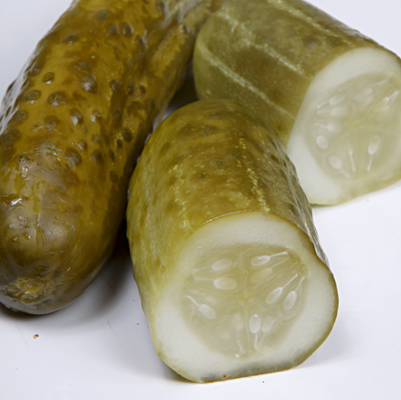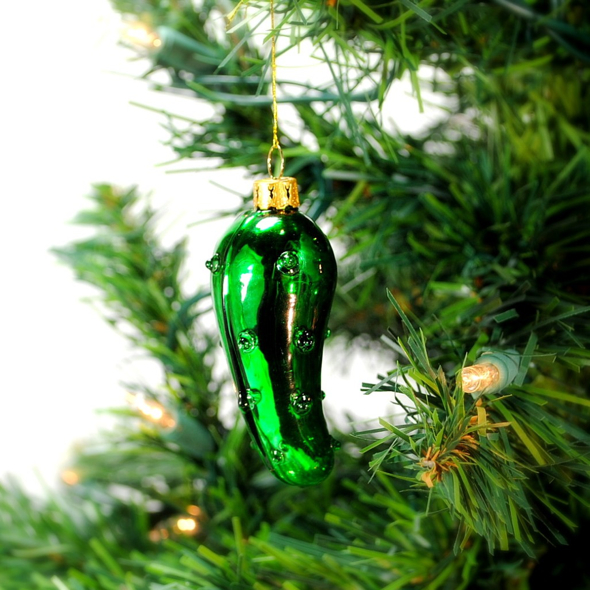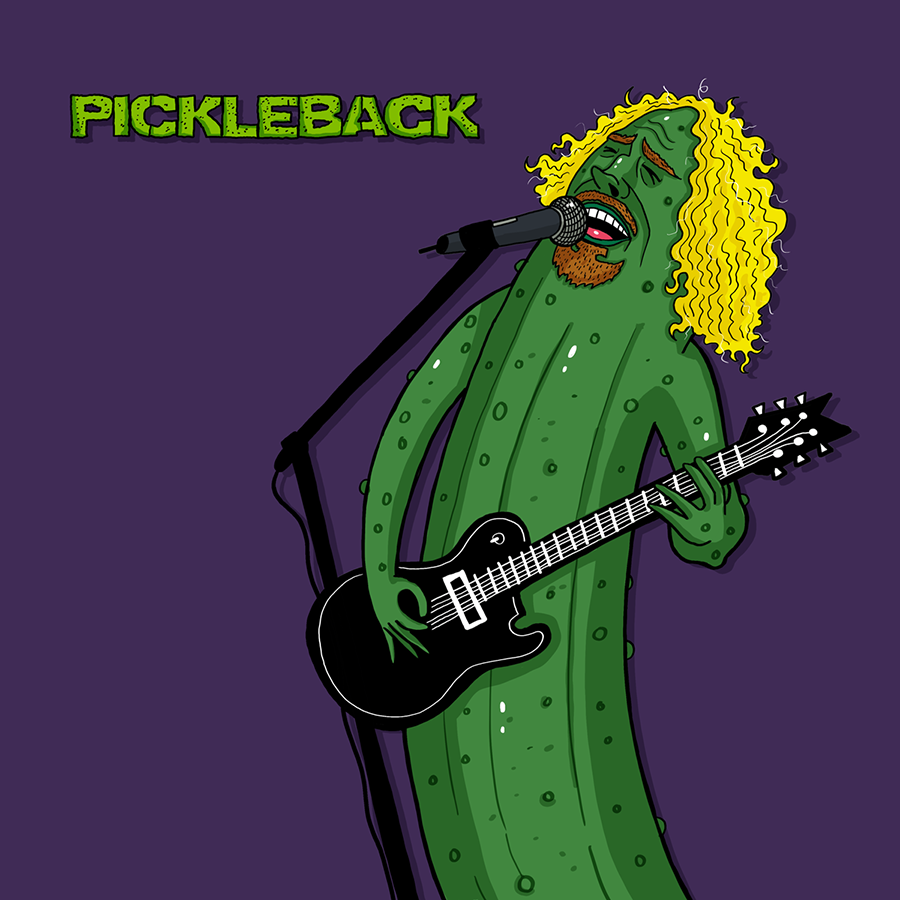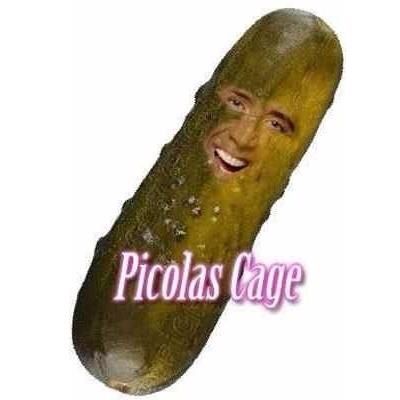
Pickles are created by immersing fresh fruits or vegetables in an acidic liquid or saltwater brine until they are no longer considered raw or vulnerable to spoilage. When we think of pickles, cucumbers commonly come to mind. Pickled cucumbers are often lacto-fermented in saltwater brine. During this process lactic microbial organisms develop, which turn the naturally occurring sugars of foods into lactic acid. In turn, the environment becomes acidic quickly, making it impossible for any spoiling bacteria to multiply. Cucumber pickles can also be made with a salt and vinegar brine, a popular choice for home cooks. The brine, known as “pickle juice,” is sometimes used by athletes to treat dehydration, though it has yet to be proven as a true remedy.
Kosher Dills

Kosher dills have a unique history of their own. In The Book of Jewish Food, Claudia Roden explains that pickled vegetables were a dietary staple for Jews living in the Ukraine, Poland, Lithuania and Russia. The sharp flavor of pickles proved a welcome addition to the bland bread-and-potato diet of these cold weather countries. For several generations, it was an autumn custom for Ashkenazim to fill barrels with cucumbers, beets and shredded cabbage. The mixture was left to ferment in a warm place for several weeks, then relocated to cool, dark cellars. The pickles would last through the long cold winter until spring, when new crops of fresh produce were available.
Sweet Pickles
Sweet pickles are packed in a sweet mixture of vinegar, sugar and spices. Here are some variations:
Bread & Butter - Sweet, thinly-sliced pickles made from cucumbers, onions and chopped green or red peppers. They have a distinct, slightly tangy taste. Available in smooth- or waffle-cut chips or chunks.
Candied - These pickles are packed in an extra-heavily sweetened liquid.
No-Salt Sweet - These are a relatively new variety of sweet pickle to which no salt has been added. Usually available as chips.
Sweet/Hot - These are a "hot" new kind of pickle. They're made by adding hot spices and seasonings to pickles for a delightful spark of piquant flavor.
Sweet Pickles: The Creepy Children's Book

Sweet Pickles is a creepy, seventies, children's book by Ruth Lerner Perle and Jacquelyn Reinach.
The books are set in the fictional town of Sweet Pickles and are about anthropomorphic animals with different personalities and behavior.
There are 26 animals—one for each letter of the alphabet. The books were published in 1977 and went out of print in the mid-1990s.
The series' name is a pun; in each book, the main character gets into a "pickle" (a difficult situation) because of an all-too human personality trait.
The front endpapers of the books portrayed the 26 characters, and the back endpapers portrayed a map of the town.
In 2012, the brand celebrated its 35th anniversary and the books are being re-released as digitally enhanced E-Books.
Sound effects, narration and character voices performed by voice actors have been added to the books.
The Christmas Pickle: Could This be an Invented Tradition?

Although the Christmas pickle story, with a few minor variations, can be found all over the internet, there is little concrete evidence that this tradition actually originated in Germany as is claimed:
Here is the Christmas Pickle's story:
“A very old Christmas Eve tradition in Germany was to hide a pickle [ornament] deep in the branches of the family Christmas tree. The parents hung the pickle last, after all the other ornaments were in place. In the morning, the most observant child would receive an extra gift from St. Nicholas. The first adult who finds the pickle traditionally gets good luck for the whole year.”
First of all, the German St. Nick doesn't show up on Christmas Eve. He arrives on the 5th or 6th of December. Nor do German children open their presents on Christmas morning. That happens on Christmas Eve in Germany.
But the biggest problem with the German pickle (saure Gurke, Weihnachtsgurke) tradition is that no one in Germany seems to have ever heard of it. Over the years this question has repeatedly come up on the AATG (German Teachers) forum.
The Lauscha "Glass Pickle Ornament" Connection
There is, however, a somewhat tenuous German connection to the glass pickle ornament. As early as 1597, the small town of Lauscha, now in the German state of Thuringia (Thüringen), was known for its glass-blowing (Glasbläserei). The small industry of glass-blowers produced drinking glasses and glass containers. In 1847 a few of the Lauscha craftsmen began producing glass ornaments (Glasschmuck) in the shape of fruits and nuts. These Glaskugeln were made in a unique hand-blown process combined with molds (formgeblasener Christbaumschmuck). Soon these unique Christmas ornaments were being exported to other parts of Europe, as well as England and the U.S.
Today Lauscha exports glass pickle ornaments to the U.S.—where they are sold along with the “German” tradition story.
Pickle Jokes



Q: What happens when you get some vinegar in your ear?
A: You suffer from pickled hearing!
Q: What do you call a pickle you buy at a great price?
A: A sweet Dill!
Q: What do you call a pickle doctor?
A: A dill pusher.
Q: What is the pickle's philosophy of life?
A: Never a dill moment.
Q: What do you call the pickle that got run over on the highway?
A: Road dill.
Q: What does an agreeable pickle always say?
A: I relish the idea.
Q: Who is the pickles' favorite artist?
A: Salvador Dilly.
Q: What is green and dangerous?
A: A thundering herd of pickles!
Q: Why doesn't a pickle like to travel?
A: Because it's a JARRING experience!
Q: What's the pickles favorite game show?
A: Let's make a Dill!
Q: What musical instrument would a cucumber play?
A: A Pickle-o.